On today’s episode of The Spa Dr. Podcast, we’re discussing dis-ease and deep healing with Dr. Greg Eckel, a naturopathic physician. We have a particular focus on chronic neurodegenerative diseases such as MS, ALS, Parkinson’s disease, Alzheimer’s disease, and dementia, but really the information we’re covering has the ability to prevent and address many other chronic diseases. It’s a different way of looking at health and healing… it’s a deep healing approach.
My guest is Dr. Greg Eckel who is a naturopathic physician specializing in natural immunology and neurodegenerative diseases. Dr. Greg and I attended naturopathic medical school together at the National University of Natural Medicine in Portland, Oregon and he’s been helping thousands of patients since. This past year something happened that changed the course of Dr. Greg’s life…
During this interview he shares about his wife’s health journey and how it’s changed his life and his practice. It gets a bit raw during the interview, but, as many of you already know, it can be devastating to experience news of a loved one’s deteriorating health.
It’s what we choose to do in these moments that can not only impact the life of our loved one, but also many others…
I hope you are inspired and learn from this interview…
To learn more about Dr. Greg Eckel, go to www.naturecuresclinic.com
To learn more about his wife’s condition and how you may be able to provide support, go to gofundme.com/sarieah
TRANSCRIPTION:
Trevor: Hi there. I’m Dr. Trevor Cates. Welcome to The Spa Doctor podcast. On today’s podcast, we’re discussing disease and deep healing. We have a particular focus today on chronic neurodegenerative diseases, such as MS, ALS, Parkinson’s disease, Alzheimer’s disease, and other causes of dementia. But really, what we’re covering has the ability to impact many other chronic diseases. It’s a different way of looking at health and healing. My guest is Dr. Greg Eckel. He is a naturopathic physician, specializing in natural immunology and neurodegenerative diseases. Dr. Greg and I attended naturopathic medical school together at the National University of Natural Medicine in Portland, Oregon.
Trevor: He stayed in Portland and opened his clinic in 2001, and has had a thriving practice ever since then. As a true naturopathic physician, he believes the body has an ability to heal itself when given the right information and removing obstacles to cure. Dr. Greg also has a unique experience that he will share about his wife’s health journey that has shifted his approach in his practice, with his patients, and with his wife and his own journey. On today’s interview we discuss how to go deep with healing chronic conditions, and think outside the box. So please enjoy this interview with Dr. Greg Eckel. Greg, it’s so great to have you on my podcast. Welcome.
Greg: Thank you. I’m so honored to be here. Been watching you many years here, and it’s great to be on.
Trevor: Thank you. Thank you. So, Greg, you and I went to naturopathic medical school together. We were in the same class, graduated together, and it’s been an interesting journey, right, of all the different things we learned along the way in practice. When you come out of school and you think you’re going to do one thing, ends up being something different, right?
Greg: Oh, entirely, yeah. Two decades later here, yeah.
Trevor: Right. I never thought that I would focus on skin coming out of naturopathic medical school, and I don’t think that you thought that you would be focusing on what you’re doing now too. Yeah, so what we’re talking about today is disease and deep healing. And I think this is important. So the word disease, but we’re breaking it down into disease. So, Greg, maybe you give a little background on why you wanted to talk about this today.
Greg: Yeah, sure. So this discussion is very … It comes from our roots of naturopathic medicine, and how I’ve come onto your podcast, and so gratefully getting interviewed today, which is awesome. I’ve come up with … I find myself in the corner, so to speak. My wife has developed a chronic neurodegenerative disease which has no cure called Creutzfeldt-Jakob disease. And it’s a bit heartbreaking actually. 1 in 300 people in North America get it a year. It’s a one in a million type of condition. And it’s basically around, I’ve gone down the rabbit hole in research as you could imagine, being a clinician, naturopathic doctor. I have a master’s of science in oriental medicine, so I’m pulling on all kinds of resources to figure out what can I do for my wife?
Greg: And it has led me down this discovery of preons, which nobody has ever heard of. And your listeners and your tribe may be wondering, “Well, what does that mean? What are they?” And these are protein structures that are almost other-worldly. They were just discovered in 1982. This Dr. Prusiner down at UCSF got the Nobel Prize in ’97 he was ridiculed for basically 30 years of research to come up with this structure in the body, which is … It’s an archaic protein that is misfolded. What is interesting about it is there’s no genetic material in it, which is very odd.
Greg: So at the time, the medical community was just thinking like, “This guy is insane. This is a virus. It’s behaving like a virus.” Well, lo and behold, I get a paper from Dale Bredesen, who was the Alzheimer [inaudible 00:04:30] lab as Dr. Prusiner, showing these preons are implicated in other chronic neurodegenerative diseases, like Parkinson’s, Alzheimer’s, dementia, anxiety. So we look at these chronic conditions that there are no known cures for. We have some medications for anxiety, but they’re highly-addictive. For dementia, Alzheimer’s, all of these things are on the rise. And I’m looking at it, I just got in my geek-dom, the preon 2017 second edition textbook, which groups all of these conditions together in their different protein structures.
Greg: And so I’ve been looking at different ways of how do we help as many people as we can at really getting at underlying root imbalances. And not just focusing on that protein, but really, how does disease or dis-ease, how does this … And it is transforming my practice. In light of … I look at it as this is a pretty … It’s pretty dismal. I’ve got Hospice at home. What Creutzfeldt-Jakob looks like is it’s rapidly progressing demential. Very rapid. This is a year ago I was on a spring break trip with my kids and Sarieah, and we had a great time. We went to the east coast, and we went to see a lot of hockey games, and went to Ellis Island, and visited family.
Greg: A year later, I’ve got Hospice at home. Sarieah doesn’t have any verbal ability at this point. Very limited. We’ll talk about maybe micro-wins coming up. But it was so rapidly progressing, it was really hard to arrive at that diagnosis as well, because there aren’t many people that get that condition. And it’s made me look at disease a lot differently. A couple components of really looking at the concept of epigenetics is really big right now, and we’re really practicing at an exciting time for that stuff. But it’s actually making me look at three generations ago. So I got into some of the research of looking at, “Okay, well how does the body express illness or disease?” And you come across research, and there’s research to show what happened to our great grandmothers can be expressing itself today. So three generations ago, it’s made our job, my job as a clinician so much harder and very much more rewarding.
Trevor: I can see how it makes it harder. How does it make it more rewarding?
Greg: Well, so more rewarding, the depth of conversation that I’m getting into with patients now is remarkable. Like, I thought my job was hard enough. But then to go back two or three generations, and really draw out for people a lot. Discovering a lot of folks don’t know their family lineage. Maybe with the advent of 23 and Me, we’re kind of getting to see what our roots, or kind of constituents of our genes and where we actually came from. But the stories are really important. And a case in point, a woman in her 30s came in and she’s had this chronic hip pain. And I treated her a year ago, it cleared up. She went back out, lived her life, but then came back in with the same hip pain.
Greg: It’s like, “There’s no reason for this hip pain. What’s going on?” Yes, she bikes a lot, but we really … Everything got corrected. Well we got into discussing. So I’m sharing with my patient base what I’m learning about just in general, diving down this rabbit hole. And lo and behold, her main caregiver was her grandmother, who fell down the steps when she was young, and hurt her hip. The same hip that this woman, her pain was. And that was her main caregiver. And from that moment, the grandmother had to be moved out of the house, and she lost that connection. So that early kind of childhood trauma for her, and what happened to her grandmother, is kind of expressing.
Greg: So as we talked about it. She kind of had this ah-ha moment. So she came back the next week and talked to me, and she’s like, “You know, my hip is actually getting better.” And all we did was talk about this and uncover this connection for her. Kind of an unconscious awareness that became conscious. So I’m not saying that that is the case for everyone, but by having this conversation, I was not even open or having that conversation before. And so it has broadened the aspects as to what are those little symptoms? How do we trace those back up into getting at the core, underlying imbalance. And so lo and behold, it can be what happened … Well, that was two generations. But it can happen even three generations ago.
Trevor: That’s really interesting, because it goes even beyond what might show up on 23 and Me.
Greg: Oh, totally.
Trevor: We’re talking about something, a trauma isn’t even something that we would think would be passed along. That’s not something that we think of as showing up in our genes. I mean, and I don’t know what’s going to come down the road in [epigenics 00:10:09]. If that’s something that we’ll be able to monitor, or if it’s more of a … I don’t want to say energetic property.
Greg: Yeah, no. I think really it is … There is an energetic quality. We are light beings, and that … In quantum physics, they’re now showing the release of light from our cells. So we literally are light beings. Like this is where my research is going on this topic. So as I look for what kind of gift can I get out of this, it has really broadened my scope of looking at reality and what is happening in this sphere. That stuff that comes on that three generations ago, that is coming. There is a movement, it’s called family-constellation work. Burt Hellinger out of Germany developed that probably four decades ago. So there are therapists that are addressing that, which it’s very interesting. In Portland, where I practice, there are some kind of theater where people will stand in for different members of the family. And so you can actually heal family traumas for the whole family tree by doing your work. So that’s a really interesting facet of this care.
Trevor: Yeah. It is really interesting that people … That’s not what we’re focusing on today, but something if people, if you’re listening, and that’s something that interests you, check it out, because I don’t know a lot about it, but my family has done a little bit of that, and it’s been really fascinating. So what are some of the things that as you’ve been on this journey, and I know you have this thriving practice. You have a successful practice that you’ve had for years. We’ve been out of school now what? 18 years?
Greg: Yeah.
Trevor: So you’ve been doing this awhile. What are some things that you’re doing with [neurogenitive 00:12:01] conditions? What are some treatment things that you’ve found particularly promising?
Greg: For sure. So hyperbaric oxygen, actually, oxygen therapies in general. So when you look at how the body heals itself. So coming back to that concept of not really focusing on the item, so not on the brain component of like, “We got to fix the brain,” it’s, “How do we give the body the correct information so that it can heal itself?” One of those basic underlying tenants of naturopathic medicine is the body can heal itself given the right information. And I’ve seen that. I’ve seen stage four cancers disappear. I’ve seen autoimmune conditions go away. No longer have antibodies on panels.
Greg: Am I claiming cure for these people? No. But given the right information and us removing the obstacles to cure, hyperbaric oxygen, so this is a hyperbaric chamber. Lebron James has one in his living room and travels with it. For sports figures, you can YouTube that and check him out. That’s the actual one that we’ve got in the clinic here. I also have one coming to my home for my wife to get treated as well. That, there is loads of research coming out of low pressure. So that’s where you get into a chamber. They developed this hyperbaric chambers for divers coming out of deep sea dives and getting the bends and kind of crippling over because nitrogen was [inaudible 00:13:33] the oxygen in their body.
Greg: So this, you don’t have to be a deep sea diver. You basically is you go in, you get a mask of 95% concentrated oxygen, and then you’re put under 1.4 atmospheres of pressure, which drives more oxygen into your plasma, and basically, the analogy that I give folks is if I had a canister with marbles, and then I poured water and there. And then, I wanted to get all of that through the wall, I’ll dump that out on the floor and the water goes through underneath the wall, but the marbles get stopped. So I’m looking at bringing in oxygen to the brain, and we’ve got this thing called the blood brain barrier, which is very hard to get through. But to get that oxygen into the plasma, that goes right through the blood brain barrier. And it’s anti-inflammatory.
Greg: Their showing for post-traumatic stress disorder. So for folks coming back from war. Traumatic brain injuries. This is remarkable to get extra oxygen into the body. It’s anti-inflammatory. It’s anti-cancer. They’ve actually had some research for folks with cancer, and it decreasing tumor size and stopping spread. So that has been a phenomenal addition into the practice. I also do a lot, a ton of IV therapy. So looking at, with in particular, DMSO. DMSO is this molecule that was developed for basically racehorses. You might like this with your background.
Greg: For racehorses, they were showing for arthritis. So this was big in the 70s. So if you have parents that they may know about DMSO. But this, I actually put in an IV, and then with phosphatidylcholine, which is great for fat and basically our brains. So to do IVs with DMSO. Also, just the multivitamin mineral IVs just to get that nutrition in. Bypass the gut. Get it into the cells. That, and of course glutathione in there for Parkinson’s patients, folks with Parkinson’s and other neurodegenerative components.
Trevor: Okay.
Greg: Yeah.
Trevor: And those are all amazing. I know it really depends on people’s location as far as if they can find people doing these types of IV treatments, as well as hyperbaric. I mean, hyperbaric is actually a little bit easier to find, because I think even some hospitals have hyperbaric chambers to help with wound care and different things too, right?
Greg: Yeah. Yeah, right. And it’s FDA approved for wound care, diabetic ulcers, along those lines. So some of these are really, their off-label at this point until we have more research. There’s a Dr. Paul Harch out of Louisiana, who has been 40 years researching this. And he’s really working to get more insurance reimbursement for folks and along those lines. So I think as the data builds, we’ll get more and more out there. Hyperbarics I think are maybe more accessible for folks.
Greg: For Lyme Disease too, that’s a big one that a lot of folks are using for Lyme as well. So that oxygen therapy … Now what is kind of unique to our approach, we put pulsed electromagnetic frequency and low level light therapy in the chamber with folks. And so these are … A lot is coming out on the red light. Couple folks are really talking about that because there’s some great research on it. And talking about us as light beings, you get that more. It’s all about oxygenation and getting that information into the body at a cellular level, and then get that circulating.
Greg: Another aspect that we kind of talked about before getting on here was the pleomorphic homeopathics, which we didn’t learn that in school. We learned more classical homeopathics. And the pleomorphics, this kind of comes out of Europe in particular. And there was a Dr. Hammer out of Germany. He passed this last summer. He got expelled out of Germany, had to practice in the Netherlands. But he had some interesting concepts of how different traumas imprint on a cellular level. And really, what led me down … I guess I should have opened with this, was that the book, The Body Keeps the Score, which is a phenomenal book for anyone that has had trauma in their lives, because it is an interdisciplinary treatment with movement therapy and acupuncture and the hyperbarics.
Greg: Basically how I’ve set up my program and process here, what I’m doing at home, and then also what’s kind of transforming the practice so to speak. So the pleomorphics really work on age groups. So from 0 to 18 months, like taking a thorough history for folks, 18 months to 7 years old, and then 7 years old through puberty, and really taking that case, really developing the relationship where there’s a safe space to talk about stuff. And you look at A scores, which are the trauma scores, at least in the United States, North America, and it doesn’t mean that we’re coming from a refugee camp. It just means basically growing up here, in the United States, there’s been a lot of trauma for a lot of people. You look at even just how media portrays now, with the … There’s school shootings and that stuff just cycles so many times, you really got to watch what you bring into the head so to speak.
Trevor: Right. Right. We definitely are impacted on a lot of different levels with all the different media that we can take in information with electronics and the cellphones and computers and the things that we’re exposed to. And really, trauma, it’s more about how the person reacts to it, how their response is to it, more than how severe the trauma is.
Greg: Totally.
Trevor: Because even what can seem like a small trauma to somebody else, could be for that person, very significant. And so the way that it impacts the body could be more so than someone else.
Greg: It’s huge. It’s huge. And so that component, when we were talking about energetics, I have brought … So I study Qigong through school, and it’s actually coming up for me more to help people with their energetic barriers, of it is really like what is the lens that we’re putting in? Our minds are so powerful. And to really protect them of what comes in, I actually have patients stand up in the morning and put their arms out around them and circle around to say that is your space. We’re projecting ourselves out there so stuff doesn’t come into the body. We see a lot of empathic people that just take on other stuff. And that can really sink your ship and cause your cells to change and create an imbalance in your body.
Greg: And it’s not just me saying it. There’s a lot of research on … Another textbook that I got going down this rabbit hole was Energy Medicine. And I’m just baffled at the amount of research. That’s what kind of turned me on to the PEMF, the pulsed electromagnetic frequency, and the low level light laser therapies, and the Qigong, and really protecting our energetic fields is so important. And there are simple steps that we can all do on a daily basis. One, turn off the crisis news network and really … I really try to skew more towards … There is a lot of positive things happening today, right? We live in an age of abundance, and there just not enough of people talking about that, because we’re not selling the soap is kind of what I teach my kids on advertising. They’re selling soap. That was the initial advertisers out there.
Greg: So to get those eyeballs, our brains are more wired for that negative aspect to keep us alive. So that’s on the limbic and the amygdala. And that’s that reptilian brain. So we really need to really start projecting out. And there’s a component of love. I don’t think a lot of people, we don’t talk about that enough. But at least what sparks me to say this is just from … Sorry. From my wife, she is a professional love beamer. So the gift, I guess, is to spread more of it. That’s what I’ll share today on that one. Pardon me, I get a little caught up. But that is a core component in a healing tradition. And that, our world needs more of it.
Trevor: Absolutely. I completely agree, Greg. And we are so isolated these days with the way that we set up our work environments I think. And there’s less community and support. And we don’t have … We’re not living with our families and we don’t have that kind of community that we used to have for generations. We had more of that. So now we have to get more creative with our community where we find support, and where we find that love and compassion. Because there’s so much healing in that. And so I think it’s important. I think we spend a lot of time as clinicians, as doctors, talking about the research on this and that treatment, and for naturopathic physicians, this particular nutrient, or this herb, and the breakthroughs with that.
Trevor: But when we get down to it, a lot of healing happens on this other level of prayer, and community, and support, and mindset, having a positive outlook and surrounding ourself with positive people, positive community. And I know life gets rough, and we don’t want to totally ignore it too. Because that would not be therapeutic either. But to take time to grieve, but also to then find the support. And one of the things I respect so much about your journey right now, Greg, and again, I appreciate you so much coming on right now when things are so raw and tough right now, is that when doctors told you six months ago that your wife had six months, and that was all you got, you didn’t just say, “Okay, well let’s plan the end of her life.”
Trevor: You have been so proactive and doing research and asking every single person. And I know when I come across something in the research, I’ll text you and say, “Have you heard about this?” And you’re, “Oh yeah. I’ve taken her to see this person and we’ve already looked at this and that.” And you were just so proactive. And that is a choice that we have. So I really respect you for that. And I know, and we’ve talked about some of the things that you’ve learned and whenever we have these kinds of opportunities, we do have this choice of saying we can just kind of give up and sort of let life happen, or we can do everything we can and make this into an opportunity.
Trevor: And it sounds like you’re definitely helping your wife and her journey and her healing. And then whatever happens with her, you’re learning so much, you can help other people too. And learning about her journey and what’s helped her, your going to be that much better. You’re already that much better of a physician because of this. So I so appreciate that. And I know that one of the things that you’ve been looking a lot at is stem cell therapy. And that is another promising thing that I’d love for you to tell more about.
Greg: Sure. Yeah, so a component of coming into this is I arrived at the stem cells, which I think are miraculous basically. So mesenchymal stem cells in particular. Yeah, so mesenchymal, so there are different stem cell types. So embryonic stem cells are the ones that got the bad rap. Like if you get an embryonic, that can become any cell and actually can create cancerous growth. So they’re immortal and they’ll just grow, and grow, and grow. That’s not what we’re talking about. That was what, kind of 10 years ago, this is all so rapid. There’s so much research coming out on these.
Greg: So mesenchymal stem cells are coming from cord blood and umbilical blood, donated. They’re donated to a stem cell bank. So there are stem cell banks around the United States. These are not FDA approved therapeutics. We do call the effing DA around here. I know, I’m sharing that. I’ll just be brutally honest.
Trevor: Going to get a guest in trouble here.
Greg: 50% of their budget does come from big pharma, sorry. But the mesenchymal cells, they have the ability to … Basically they’re signaling agents for our bodies to heal themselves. So they’ll donate their mitochondria to a cell that has been damaged. So they’ll go to areas of the body and help the body heal itself. So they’ll regrow cartilage and bone. So they’re big in the orthopedic world. But there is a lot of information coming out around autoimmune conditions, multiple sclerosis. I’m looking at it a neurodegenerative fashion to say, “Hey, let’s get these in and see are they going to be able to help the body heal itself?” So I think a lot of times, physicians are looking at them as the cell is … Like the cell becomes the tissue that it’s replacing. But it’s not, it’s actually signaling the body to help repair and kind of correct. They’re kind of miraculous, actually, when you really get in on the research on them.
Trevor: Yeah. And there are different types of therapeutics for stem cells as well. And there’s autologous stem cells where people are getting them from their own body, from their fat cells, and practitioners are pulling those. Doctors are doing that. And then there’s also the combination approach of the two, right?
Greg: Right, yeah. They’ll pull it from the bone marrow and fat of the individual and then put those back in. And then you can also get these exogenous stem cells as well. My understanding of those, the difference is basically from … As we age, our stem cells start to decline. There are a couple theories on aging in that when you run out of stem cells, you die. Because they’re found throughout our bodies. So basically, the concentrations are 1 to 600 from fat and bone for a 40 year old or older, compared to 1 to 3 million when you get them from a stem cell bank.
Greg: It’s my wife, I figured I’m going to go for … I’m going to use more here. And in the practice too, we’ve been using them for more orthopedic uses. And I mean, chronic pain patterns for people, somebody comes in with a bone on bone knee joint, and they’ve had 20 years of pain, and I mean, it’s like phenomenal. Doesn’t work for [inaudible 00:29:55] but it is a pretty amazing procedure for a lot of people.
Trevor: Right, absolutely. And we’ve had Dr. Harry Adelson on talking about stem cells for chronic pain. And he definitely is a good resource on that too. So let’s … Tell everybody how your wife is doing. I mean, it does look like she has some moments of … Those moments of maybe there’s some progress here, right?
Greg: Yeah. So components for me, I’m wearing three hats. I’ve got my clinician hat, and then I have my partner hat, and I have my parental hat. We have five kids together too. And so it’s a lot of different juggling. And the whole process has been humbling. Being in this position of talking to the neurologist in October, basically told me on a Friday afternoon at 6:00, “Well, its Creutzfeldt-Jakob, she won’t be here next year.” It’s like, “Thanks a lot, Kevin, for your bedside manner. Like you’re going home Friday with your family, and then you just drop this on me.” It’s like, “What in the world?” So that’s where I kind of tripled down, so to speak, and just said “Okay, wait a minute. We might as well. Let’s go for it. Hopefully we discover … Maybe we’ll have a breakthrough.”
Greg: I mean, I’m praying for a miracle. Spontaneous remission, whatever you want to call it, we’ll take it. And along the way, if we can learn a lot to help more people, awesome. So it’s, like I said, I’ve got Hospice on board right now. I’m looking for micro-wins. So meaning some signal or signs that, “Okay, what we’re doing is making a difference.” So I shared kind of one of my older boys and I on a Friday night, we had Sailor Sarieah arrive. So she hasn’t spoken in four months, and then all of the sudden it’s like this cussing and just clear as day coming out at us.
Greg: And we’re both kind of chuckling at her, which I’m sure pissed her off a little bit more, but it was so great to hear her voice and have those words come out. And that was after we started up on the stem cell treatments. So that was encouraging. She has really decompensated, and is wasting, but she was able to walk with my boy as well. And without having major support. So just holding hands in front and having her walk around our island in the house. That is pretty phenomenal and remarkable. The prognosis for this condition is 4 to 17 months. And we’re obviously … I’m going for full return. And also, I’ve got Hospice on board, and you got to juggle both of these worlds of … You just do your best really is what you go for. And love more freely I think is the message.
Greg: So that’s kind of the component of where we’re at at home now in the personal world. And any prayers, energy, we’ve got all kinds of things coming at us, and we will take them. So on whatever this level this can occur, may we have a miracle. That’s great. In the meantime, it’s transforming my practice. I’m speaking more freely about some of these energetics that maybe in the past I’ve thought but didn’t really share in a professional sphere. And I just think we don’t … You never know how much time you have on the planet. Start doing it now. Whatever your heart is whispering to you, that’s what you should be doing. And just start now. Yeah.
Trevor: Yeah. Thank you, Greg. And this is when breakthroughs happen. This is when discoveries happen. This is when miracles happen. Because if we’re always just following the status quo, if we’re just waiting for … I mean, the FDA works hard with certain things. I’m not going to say they’re all bad. But they’re not at the forefront of things. They’re not going to be the ones leading the way. And in some ways, sometimes it feels like they’re holding us back. These regulations and waiting to have something approved.
Trevor: That’s not how we make progress in science and medicine. We make progress and we move forward and we make discoveries by asking questions, by experimenting. I mean, that’s part of science is experimenting. And so we have to try things that other people aren’t doing, or trying to make these connections of, “Okay well, and on a physiologic level this makes sense.” If stem cells are helping for this thing, or if hyperbaric is helping for this thing, and the body works like this, then making those connections. And that’s exactly what you’re doing. And not waiting for that research to prove your point, but to lead the way-
Greg: Yeah, I don’t have time.
Trevor: No, you don’t have time. And so I hope this also inspires people listening and watching to think about what you could be doing in your own life to kind of keep the movement going. We want to have more discoveries, and the studies of things like epigenetics and stem cells. And I think it’s really exciting, and energy medicine, and what those can bring for us. So, Greg, thank you so much for coming on today. And we’ll have to have you back on so you can give us an update on how things are going and what you’ve learned.
Greg: Oh, thank you so much, Trevor. It’s been a pleasure. And yeah, thank you.
Trevor: So, Greg, tell everybody where people can find your clinic, where’s your website. And then also, you’ve got a GoFundMe program to raise money and awareness for what’s going on with your wife, right?
Greg: Yes, yes. I do. So I’m at NatureCuresClinic.com. So it’s Nature, singular, Cures with an S, Clinic .com. That’s my clinic website. We’re in Portland, Oregon. We’ve got a wealth of information on there. And then also, I’ve got a GoFundMe.com/Sarieah. It’s S-A-R-I-E-A-H. Which is a lot of vowels. It’s also the pleiades stars in the sky. But on there, I’m putting updates on the GoFundMe site. It’s helping bring in some of these therapeutics, all of them are … They’ve got some cost associated with them. And I’m really putting it together and making a big concerted push. So any support that folks can give us would be much appreciated. I’m just humbly asking. The whole process, it’s humbling. And I’m growing as a being. It’s not ever easy to ask for support or help, but we are all in it together.
Trevor: Yeah, absolutely. And I know that health insurance, it’s not like they’re going to be covering these things that you’re doing for her care. Well, we’re going to have those links up on the website below your podcast interview. Again, thanks so much, Greg, for coming on today. Great to connect with you.
Greg: Yeah, likewise. Thank you, Trevor.
Trevor: I hope you enjoyed this interview today with Dr. Greg Eckel, and it motivated you and inspired you to think outside the box when it comes to healthcare and the different approaches so that we can have more discoveries in science and in medicine. Because that’s when miracles happen. So to learn more about Dr. Greg and to get to the links that he mentioned, you can to TheSpaDoctor.com. Go to the podcast page with his interview, and you’ll find all the information and links there.
Trevor: And while you’re there, I invite you to join The Spa Doctor community. You could also subscribe to the podcast on iTunes, so you don’t miss any of our upcoming shows. And if you haven’t done so already, I highly recommend you go to TheSkinQuiz.com and get a free skin assessment. Find out what information your skin is trying to tell you about your health and what you can do about it. Go to TheSkinQuiz.com. Also, I invite you to join me on social media, on Facebook, Twitter, Pinterest, Instagram and YouTube, and join the conversation. And I’ll see you next time on The Spa Doctor podcast.
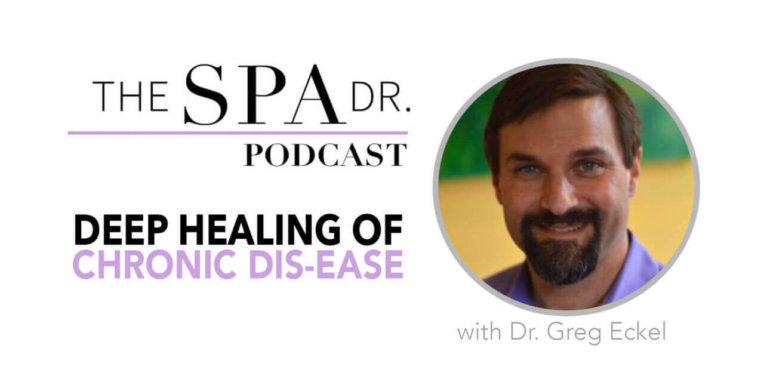
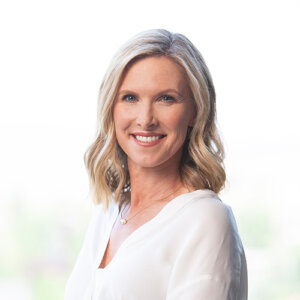
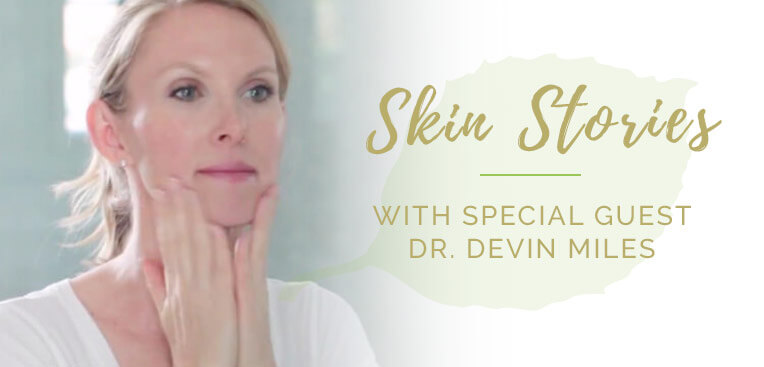
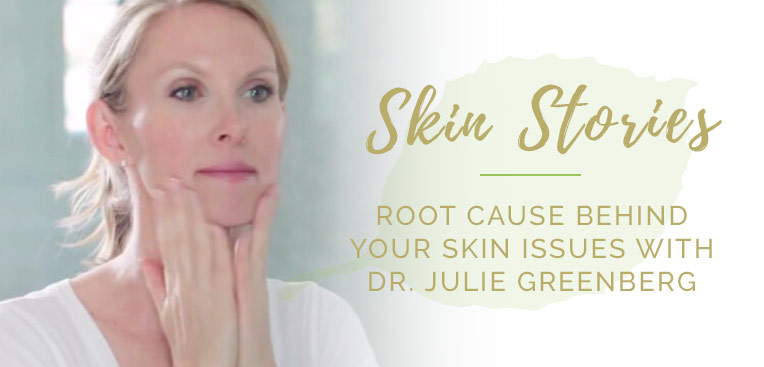
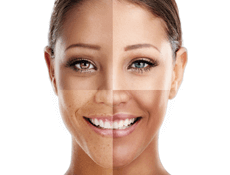
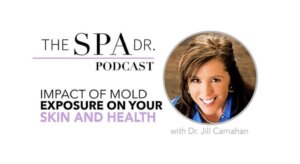
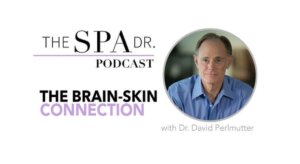
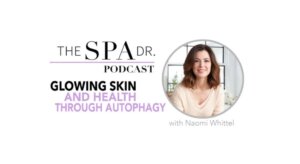
Reader Interactions